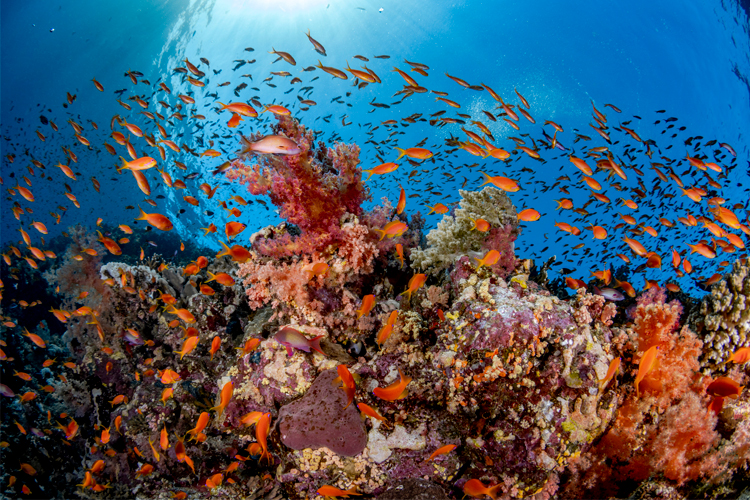A new study from the University of Toronto, the Wildlife Conservation Society (WCS) and the National Research Council of Italy sheds light on “coral reef hope spots” — ecologically unique areas that are critical to the health of the ocean around the world.
The researchers found that climate-resilient reefs are connected in invisible underwater networks linked by tiny larval corals that travel from reef to reef on ocean currents. These networks can regenerate ocean biodiversity, even after projected mass bleaching events from climate change.
“Our results show how crucial it is to understand coral reef networks and how they may be affected by climate change, when designing future coral reef conservation strategies,” says Ariel Greiner, a PhD candidate in the Department of Ecology & Evolutionary Biology at the University of Toronto’s Faculty of Arts & Science and lead author of the study. “We found that these coral reef networks may help maintain coral reef strongholds, and additional steppingstone reefs — reefs that serve as larval dispersal pathways between coral reef strongholds — will be crucial for preserving the rest of global coral reef habitat.”
Strategic conservation action is crucial in the face of climate change. Our study shows that biological connections between reefs can increase the ability of corals to recover from climate shocks and are a call to action to boost the health and function of key “source” reefs in climate-resilient networks.
In the study published today in the journal Global Ecology and Biogeography, scientists modelled coral larval dispersal connections between reefs. Also known as coral connectivity, these connections form networks that serve to transport larval corals over vast distances to shuffle the gene pool and as a source of new individuals that help reefs recover from coral bleaching and other disturbances.

By modelling connectivity under different scenarios of climate change and future coral bleaching, their results generate a preview of where reef habitat may be lost in coming decades, and pinpoint which reefs will have the greatest potential to recover and reseed other reefs. This new information will help direct limited resources for conservation at a crucial time for climate action.
Some existing climate-resilient coral reef strongholds are expected to have the best chance of surviving rising ocean temperatures. If these reefs survive, the researchers found that after severe bleaching, coral connectivity — grouped into six major networks of interconnected reefs worldwide — will be largely preserved even if 71 per cent of global coral reef habitat is lost.
Their findings also indicate that “steppingstone” reefs, which create links across reef networks to better enable coral reef strongholds to reseed corals around the world, should also be prioritized for conservation and management.
“Strategic conservation action is crucial in the face of climate change,” says Emily Darling, director of Coral Reef Conservation at WCS and an adjunct professor in the Department of Ecology & Evolutionary Biology at U of T, as well as study coauthor. “Our study shows that biological connections between reefs can increase the ability of corals to recover from climate shocks and are a call to action to boost the health and function of key “source” reefs in climate-resilient networks.”
According to the researchers, this study provides hope for the communities, scientists, governments, and institutions all over the world who rely on and steward coral reef ecosystems. If the global community curbs carbon emissions and limits warming to 1.5 degrees Celsius, coral reefs have a chance to survive climate change. Protecting the most climate-resilient reefs, and their connections between each other, will pay dividends in the decades to come.
This research was supported by Bloomberg Philanthropies, The Tiffany & Co. Foundation, and by the National Science and Engineering Research Council (NSERC) Canada Graduate Scholarships and Canada Research Chairs.
With files from the WCS.

